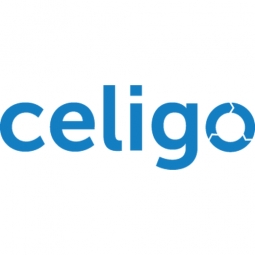Customer Company Size
Mid-size Company
Region
- America
Country
- United States
Product
- NetSuite
- Celigo Survey Management Solution
Tech Stack
- SuiteScript
- Custom Records
- Email Templates
- Formula Fields
- Saved Searches
Implementation Scale
- Enterprise-wide Deployment
Impact Metrics
- Customer Satisfaction
- Digital Expertise
- Productivity Improvements
Technology Category
- Analytics & Modeling - Predictive Analytics
- Application Infrastructure & Middleware - Data Exchange & Integration
Applicable Industries
- Retail
- Consumer Goods
Applicable Functions
- Sales & Marketing
Services
- System Integration
- Software Design & Engineering Services
About The Customer
Lumens Light + Living is dedicated to offering the best design-oriented lighting, fans, and home accessories. They came to the web in 2006 with the goal of being the best place to shop for lighting, fans, furniture, and accessories for people who love modern design. At Lumens, modern design doesn't mean limited design. They aim to provide a wide range of products that cater to various tastes and preferences, ensuring that every customer finds something that suits their style. Lumens is committed to customer satisfaction and continuously seeks ways to improve their service and product offerings.
The Challenge
Lumens Light + Living needed a way to get accurate, consistent feedback from customers on their level of satisfaction. They lacked a solid gauge of their performance and needed to improve certain areas. Customers came from various points of entry, and Lumens needed a way to ask questions specific to each point of entry and weight what’s more important if a customer purchases in-store versus over the web. They had recently implemented NetSuite and wanted a customer satisfaction survey integrated with NetSuite and transaction-based. Most survey solutions they looked at were not based on transactional events, so they turned to Celigo to extend NetSuite and build a solution within NetSuite’s inherent customization capabilities.
The Solution
Celigo built a solution that met Lumens’ needs for an integrated customer survey tool. Using custom records, suite scripts, email templates, formula fields, saved searches, and KPIs, Celigo created a solution that sends automated surveys relevant to the transaction type and place. The solution tallies the results using a ranked scoring system and sends satisfaction metrics to relevant stakeholders. The survey management solution for NetSuite includes logic that sends automated emails to a dynamically retrieved target audience, online satisfaction survey forms that maintain Lumens’ corporate branding, and the ability to rank and weight survey questions and responses. This enables Lumens to accurately capture customer satisfaction metrics relevant to the type of transaction.
Operational Impact
Quantitative Benefit

Case Study missing?
Start adding your own!
Register with your work email and create a new case study profile for your business.
Related Case Studies.
.png)
Case Study
Improving Vending Machine Profitability with the Internet of Things (IoT)
The vending industry is undergoing a sea change, taking advantage of new technologies to go beyond just delivering snacks to creating a new retail location. Intelligent vending machines can be found in many public locations as well as company facilities, selling different types of goods and services, including even computer accessories, gold bars, tickets, and office supplies. With increasing sophistication, they may also provide time- and location-based data pertaining to sales, inventory, and customer preferences. But at the end of the day, vending machine operators know greater profitability is driven by higher sales and lower operating costs.

Case Study
Improving Production Line Efficiency with Ethernet Micro RTU Controller
Moxa was asked to provide a connectivity solution for one of the world's leading cosmetics companies. This multinational corporation, with retail presence in 130 countries, 23 global braches, and over 66,000 employees, sought to improve the efficiency of their production process by migrating from manual monitoring to an automatic productivity monitoring system. The production line was being monitored by ABB Real-TPI, a factory information system that offers data collection and analysis to improve plant efficiency. Due to software limitations, the customer needed an OPC server and a corresponding I/O solution to collect data from additional sensor devices for the Real-TPI system. The goal is to enable the factory information system to more thoroughly collect data from every corner of the production line. This will improve its ability to measure Overall Equipment Effectiveness (OEE) and translate into increased production efficiencies. System Requirements • Instant status updates while still consuming minimal bandwidth to relieve strain on limited factory networks • Interoperable with ABB Real-TPI • Small form factor appropriate for deployment where space is scarce • Remote software management and configuration to simplify operations

Case Study
How Sirqul’s IoT Platform is Crafting Carrefour’s New In-Store Experiences
Carrefour Taiwan’s goal is to be completely digital by end of 2018. Out-dated manual methods for analysis and assumptions limited Carrefour’s ability to change the customer experience and were void of real-time decision-making capabilities. Rather than relying solely on sales data, assumptions, and disparate systems, Carrefour Taiwan’s CEO led an initiative to find a connected IoT solution that could give the team the ability to make real-time changes and more informed decisions. Prior to implementing, Carrefour struggled to address their conversion rates and did not have the proper insights into the customer decision-making process nor how to make an immediate impact without losing customer confidence.

Case Study
Digital Retail Security Solutions
Sennco wanted to help its retail customers increase sales and profits by developing an innovative alarm system as opposed to conventional connected alarms that are permanently tethered to display products. These traditional security systems were cumbersome and intrusive to the customer shopping experience. Additionally, they provided no useful data or analytics.





